For some students, writing a narrative essay is like trying to climb Mount Everest- difficult, laborious, and daunting. But with the right guidance, you can turn that literary climb into an attainable accomplishment.
Breaking down an essay into manageable parts is the key to getting your most stubborn students to write. You’ll need at least a week or two to teach your struggling students how to write a well-written narrative essay step-by-step.
Here’s a step-by-step guide to help your students to put pen to paper (or fingers to keys) in no time.
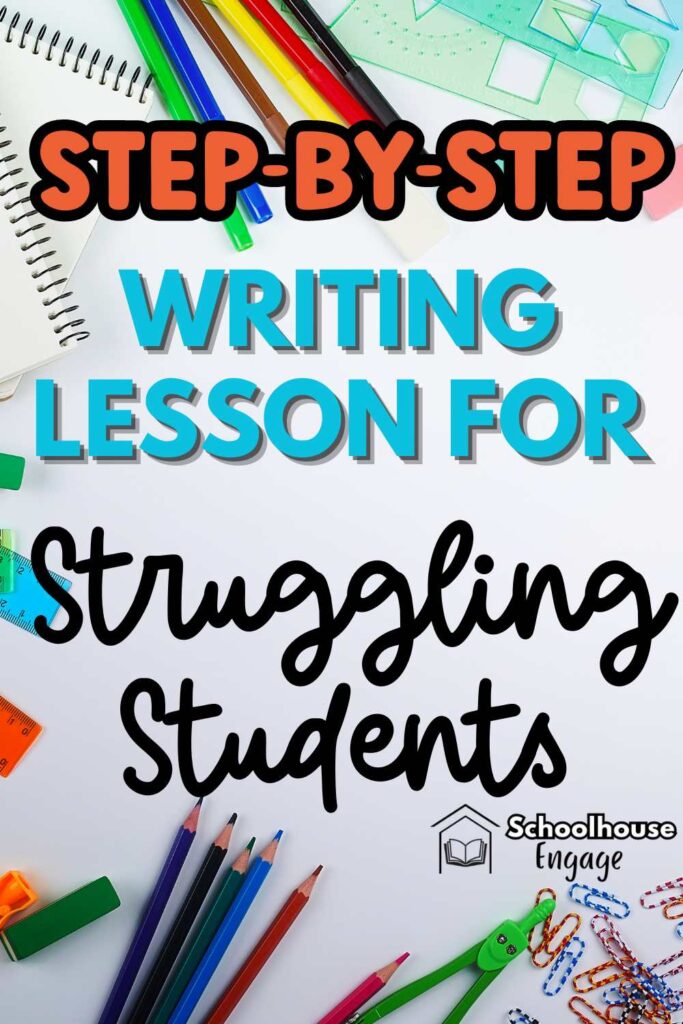
Day 1: Reading example narrative essays
Provide models of Student Writing
Struggling writers need lots of examples. I save essays from my students of the previous year or I have a few I’ve composed in the past. If you are short on time, ask another teacher if you can copy some examples of students’ essays. Make sure to take out the name of the student who wrote it. I display the essays on my View Board so we can highlight and bold anything that was done correctly.
Another place to find great examples of student writing is by logging into your state testing website. There you will see different ways narrative essays are scored by your state. Point out to students what was done well in the essay (or not so well) and why the student received the grade they did.
Day 2: Writing the Introduction
Model a simple, Clear Introduction
Model how to write the introduction on a large chart paper that all students can see. We start with a sentence that describes the scene by explaining when, where, who, what, and sometimes why.
Examples:
It was a cold, foggy morning and my family and I were at the dock lined up to go on a whale-watching boat last year.
It was a hot, sunny day and my friends and I were at the beach getting our feet wet last summer.
Encourage your students to use the example for their introduction. I tell my students that they can’t copy my introduction, but they can be inspired by it. There are many ways to start a narrative essay, but when you are dealing with struggling writers, make the writing process simple by just teaching them one way of starting their essay.
Assist Students During Writing
Walk around and read their introductions as they write them to assist where you can. Once they are done, model how to write the 3 most important events in the story that move the story along. Explicitly show your students that the major event should be written in only 1-2 sentences. If you don’t do this, they will cram 3 sentences in the major events box, which should go into their details section.
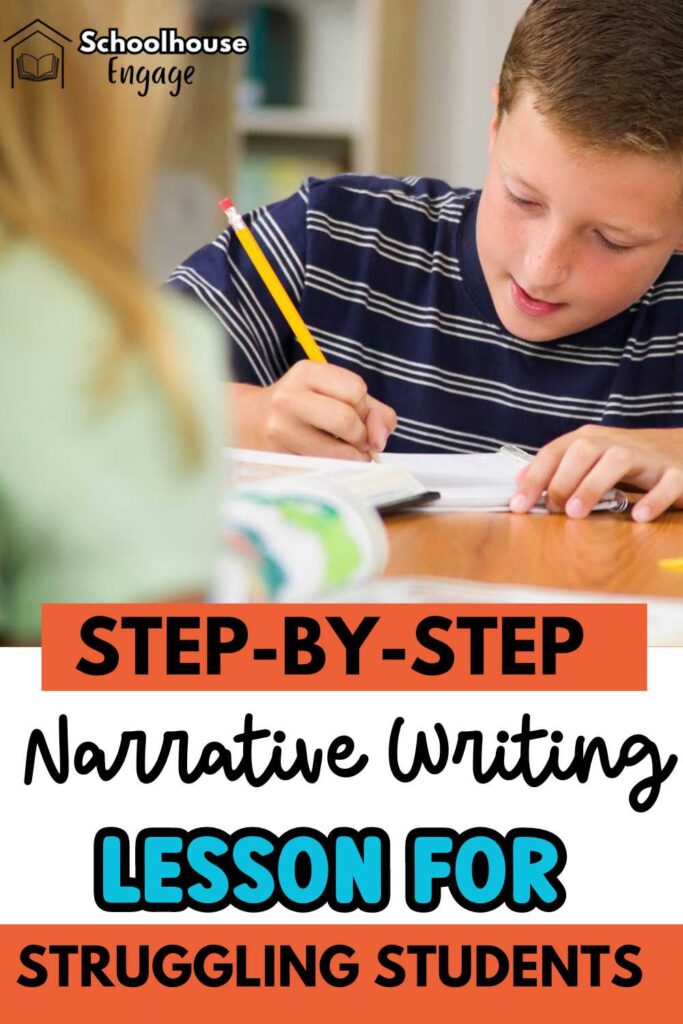
Day 3 and 4: Adding Details to Events
Expanding the Narrative with Details
It’s time to model how to add details to “tell more’ about each event. Add bullet points of details on your large graphic organizer. Tell your students that this is only a brainstorm and they should not write sentences; only words or phrases.
Guide their brainstorming with questions like:
- How did you feel?
- What did you say?
- What were other people saying?
- What did you see, hear, or smell?
- What did you do?
I display this Tell Me More image (see below) on my View Board and even print it out for my students to add to their ELA notebooks. While they work on their graphic organizer or compose their essay, I ask them to refer to it if they are stuck and don’t know what to write. All they need to do is answer the questions and use their imagination.
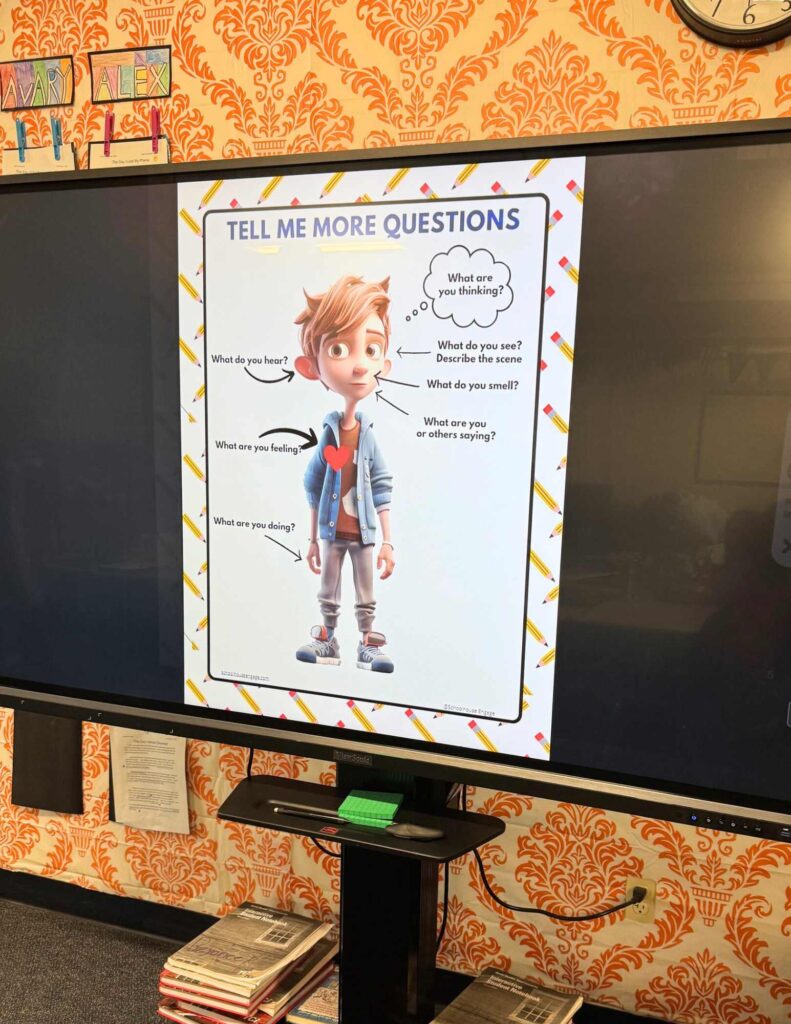
There are always students who finish their graphic organizer early, so I let those students start their essays on their computers. We read two articles about lions and koalas and I wanted them to incorporate what they learned into a narrative essay.
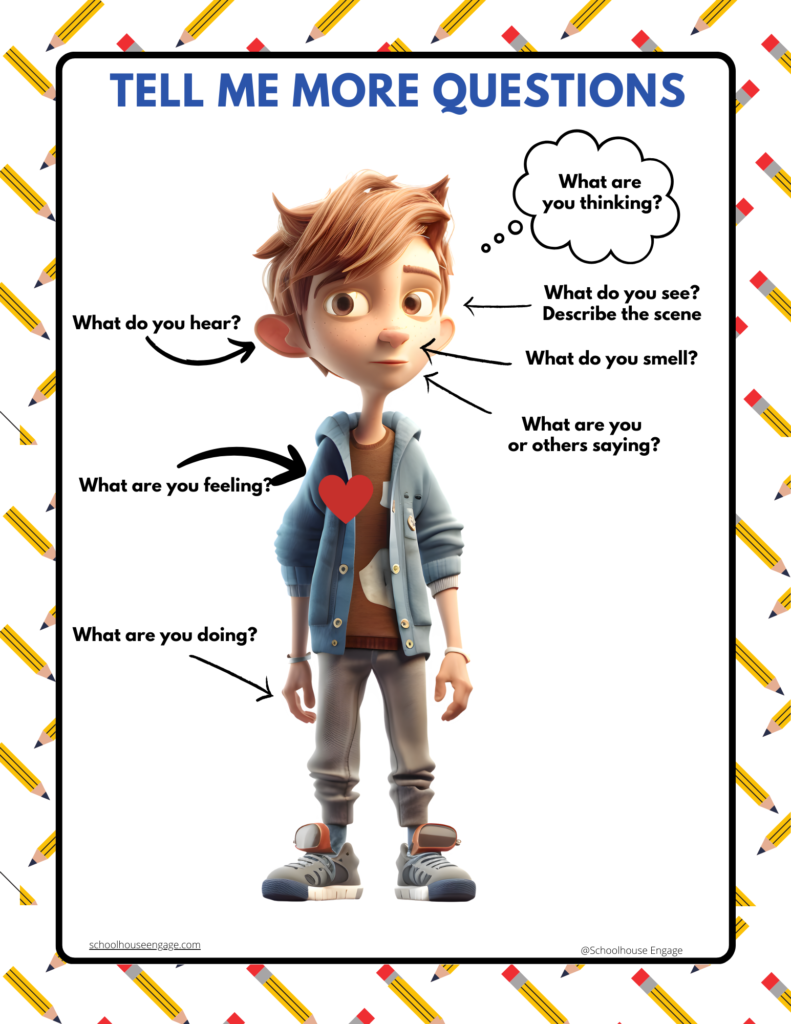
Download for Free
Get your FREE Tell Me More Questions Printable. You’ll also receive my best teaching tips and FREE resources. Opt-out anytime.
This is something that students are required to do on the SBAC state test. The assignment was to pretend that we went to the zoo and saw a lion habitat and koala presentation. Below you will see in the image an example of a narrative graphic organizer I did with my students.
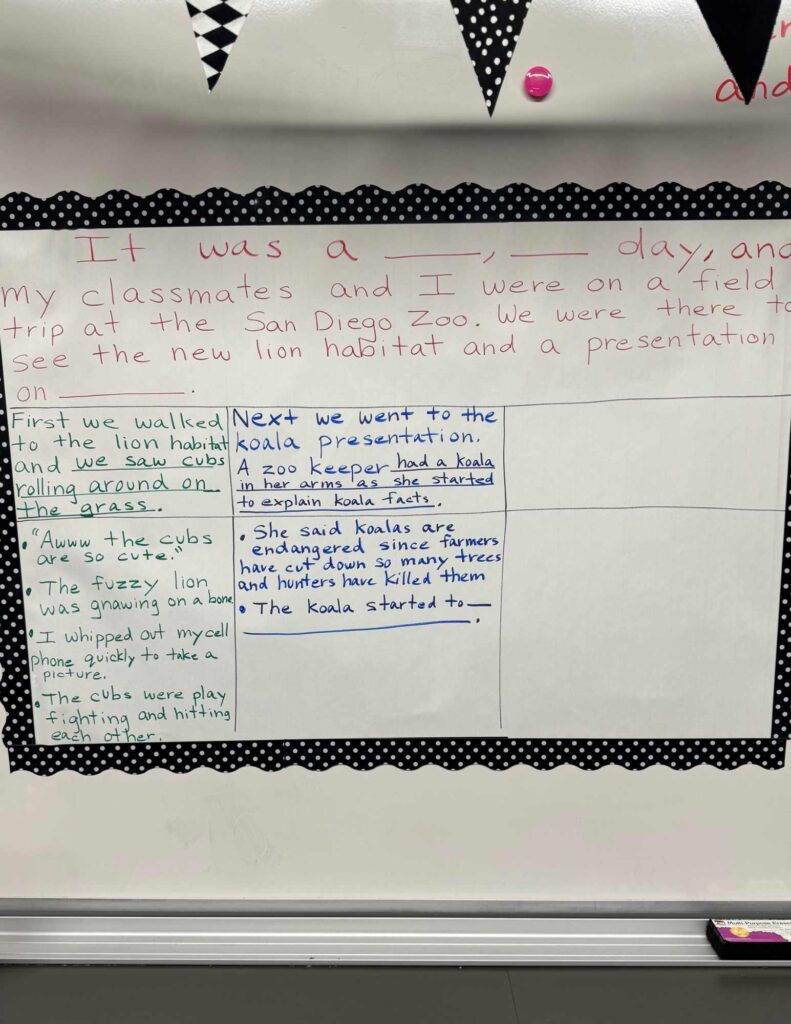
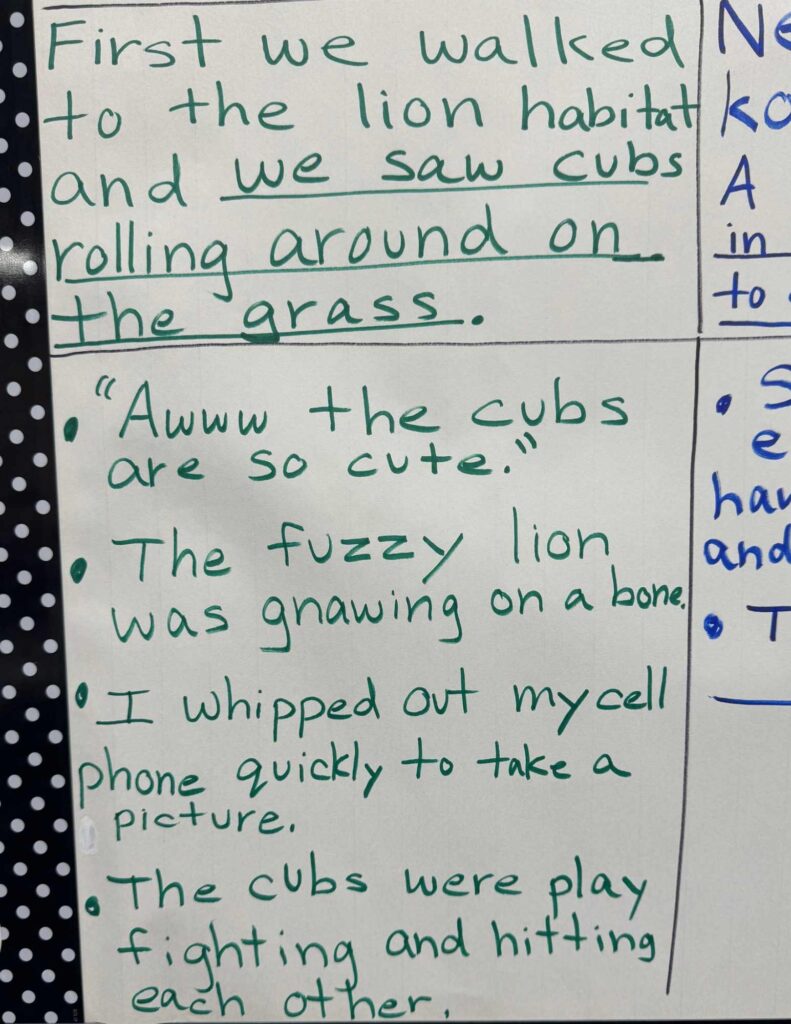
Day 5: Drafting the Introduction and Body
Modeling the Writing Process
Your struggling students need to see how to take all the information from the graphic organizer and put it onto paper (or a typed document). Only model how you would write the introduction and the first event in the body. If you model writing the whole essay, it will take too long and your students will tune out.
Revising as You Write
As you write, model how you reread what you wrote to make sure it makes sense. Add a few ideas that your graphic organizer didn’t include. This is important so your students see that their graphic organizer is a starting point and not the be-all and end-all.
Highlight transition words so your students see that they need to be included at the beginning of each paragraph and in the middle of the paragraph to make the writing flow.
Now it’s your students’ turn to take the information from their graphic organizer and transfer it to a written document. Walk around and help them during this stage. I can’t emphasize this enough. This is the time to intervene and help your struggling students with their narrative writing, not when they are all done and will need to change everything.
Day 6: Writing the Conclusion
Summing Up the Story
On day 6 model how to write the conclusion on your example essay. The conclusion needs to be a sentence that sums everything up and helps the reader know why the day or event was so important. It needs to be at least two sentences.
Examples:
“I’ll never forget the day I _________.”
“I’ll always remember how I ________.”
Provide Individual Student Support
It will take your students another day or two to finish their writing. While your class is working on their writing, call up students one by one to a table and revise their writing together. You won’t get to all of your students, so choose a few who you know need the most help.
Students on grade level need attention too but I just walk around the room and read a few sentences to give them immediate feedback.
Final Thoughts
With support and enough practice, your struggling students can write essays. It takes a lot of patience on our part as educators and homeschooling parents. With time and practice, students will make progress. Practice makes progress!
Looking for Writing Support?
If you need strategies to help your students add “tell me more” details, check out my Show Don’t Tell Writing lessons.
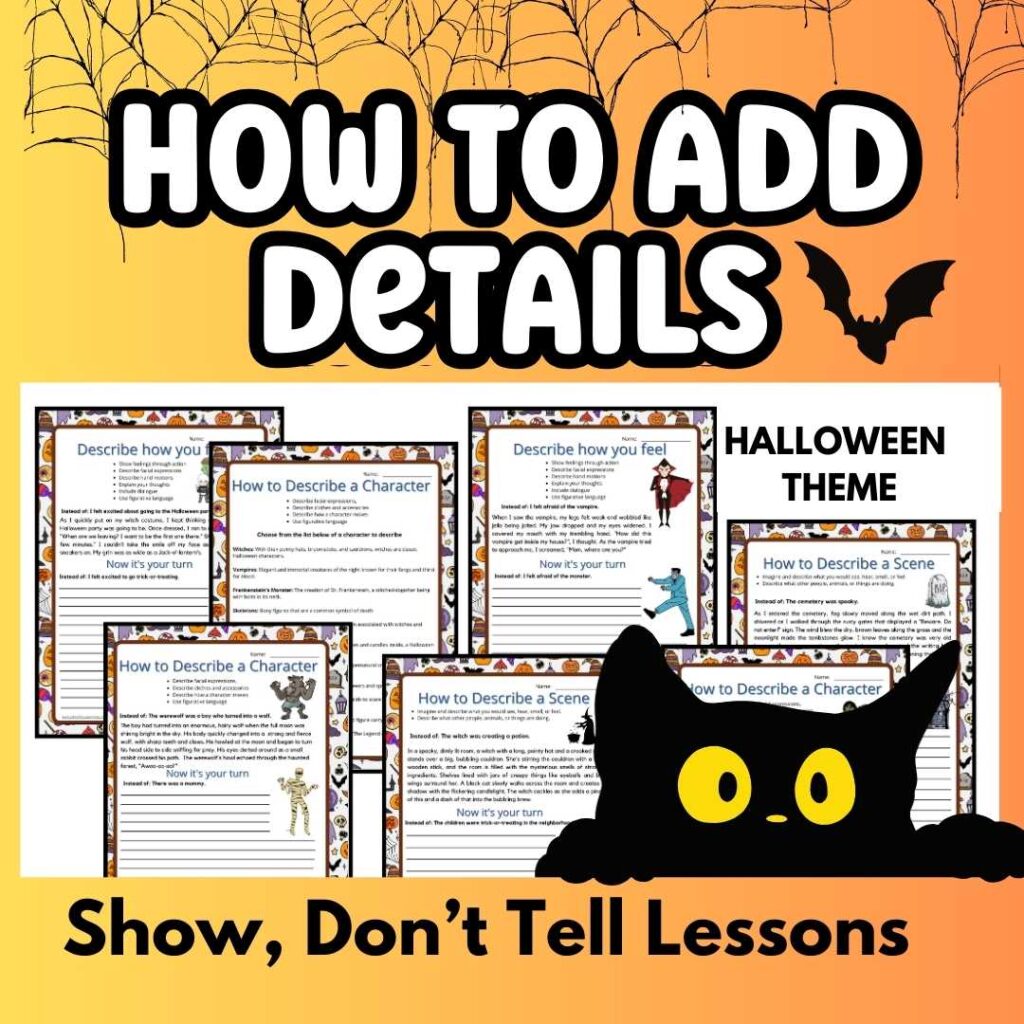
If you need ideas on how to help struggling students with math, check out my other blog posts:
How to Help Struggling Math Students in 5th
5 Strategies for Teaching Students with Dyscalculia in Upper Grades
